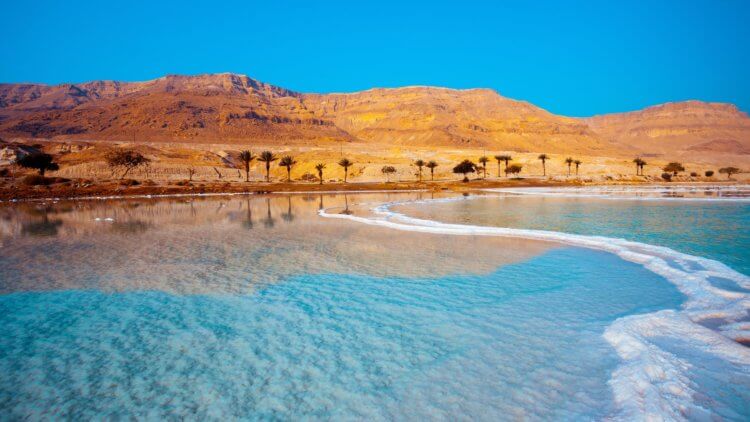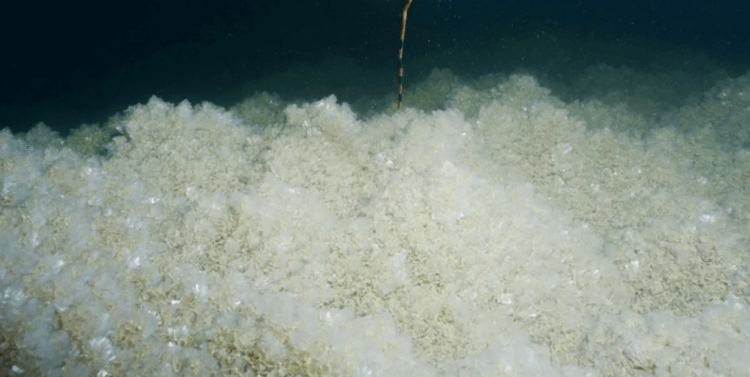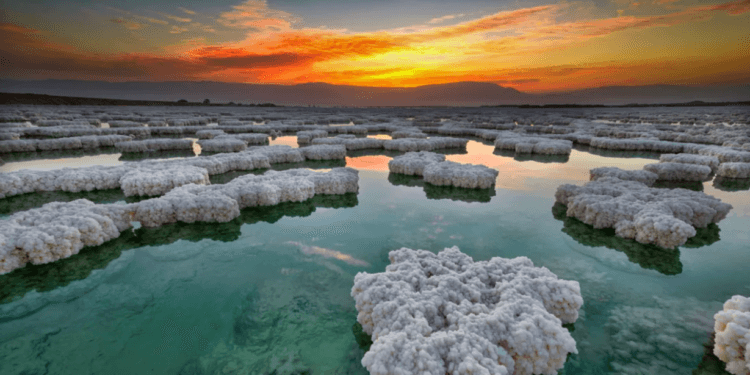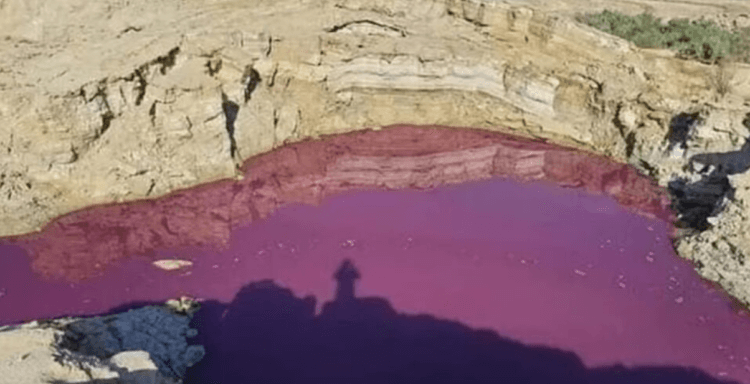Not everyone knows that the Dead Sea is actually a lake, that is, it is not connected to other seas, and is not part of the world's oceans. In addition, it is not dead in the full sense of the word, since bacteria and some other types of microorganisms live in it. But it is one of the saltiest bodies of water on the planet, which is approximately 8-10 times saltier than any of the existing seas and oceans. Due to the high salt content, the water density in the Dead Sea is so high that it is impossible to drown in it. The consistency of the water in it is more like olive oil mixed with sand.

The Salt Sea is one of the saltiest bodies of water on the planet. Photo source: planetofhotels.com
How salty is the Dead Sea?
The Dead Sea is not the saltiest body of water on Earth, but it is the second. In first place is the Gaetale Pond, located in the Danakil Depression in Ethiopia. This reservoir has a salt content of 43.3%, which is an incredible value. The Dead Sea is inferior to the Gaetale pond by 9%, since the salt content in it is 34 percent.
By comparison, the salinity of the world's oceans averages 3.5 percent. To understand what kind of water is in this reservoir, you can take a jar, fill it a third with salt and add water. The salt should completely dissolve. Because of this density, any person who does not even know how to swim can calmly lie on the water in the Dead Sea and, for example, read a newspaper.
But the most interesting thing is that the salt content in the reservoir is constantly increasing. The Dead Sea Observatory even discovered that salt began to precipitate at the bottom. As a result, salt crystals accumulate at the bottom of the lake and accumulate. Each year the layer thickness increases by several inches.

Salt crystals accumulate at the bottom of the Dead Sea: Photo source: iflscience.com
The salt buildup occurs due to a process known as double diffuse convection. Warm water moves to cooler lower layers, causing its ability to hold salt to decrease. As a result, the salt settles out in the form of crystals. This process occurs quite quickly, since the Dead Sea has almost reached the limit of its ability to hold salt.
Why is the Dead Sea very salty
As mentioned above, the Dead Sea is not connected to other seas and oceans. This means that the water that enters the Dead Sea from the Jordan River has only one way out – evaporation. But, as we know from physics lessons, pure water evaporates, without the impurities it contains. Simply put, all the minerals and salts accumulate in the Dead Sea, causing it to become increasingly saltier over time.
In addition, according to scientists, salinity has increased due to human activities, such as dams and diversions. water for agriculture has meant that the lake receives less water from the river than before. As a result, less fresh water dilutes the salt water of the Dead Sea.

The water in the Dead Sea is so salty that it is impossible to drown in it. Photo source: iflscience.com
To all this should be added the warm climate in the region, as a result of which the water quickly evaporates. Its level is falling at a rate of about 1.2 meters per year, accordingly, the density of water is constantly increasing. Salt accumulates especially quickly in the lower layers near the bottom. In addition, there are many springs rich in minerals along the shores of the Dead Sea.
The reason for the large number of salty springs is due to tectonic activity. As a result, one large and very salty reservoir arose. As you might guess, neither fish nor animals can exist in such conditions. That is why the lake received the name “Dead”. However, since the 30s it has become known that it is not completely dead. It contains microscopic extremophile organisms. By the way, the Dead Sea — far from the most extreme environment where life exists.

For example, Archaea exist in numbers from one thousand to ten thousand per cubic millimeter of water. In 1992, a bloom of green algae Dunaliella parva literally transformed the surface of the reservoir, turning it red. As a result, it became like a “bloody” sea. According to scientists, this color was associated with the content of a large amount of the substance bacterioruberin.
Be sure to subscribe to our Zen and Telegram channels. This way you will always be aware of new scientific discoveries!
Unfortunately, due to a decrease in the influx of new water and active evaporation, the Dead Sea may suffer the same fate as the Aral Sea. That is, over time it may simply disappear.